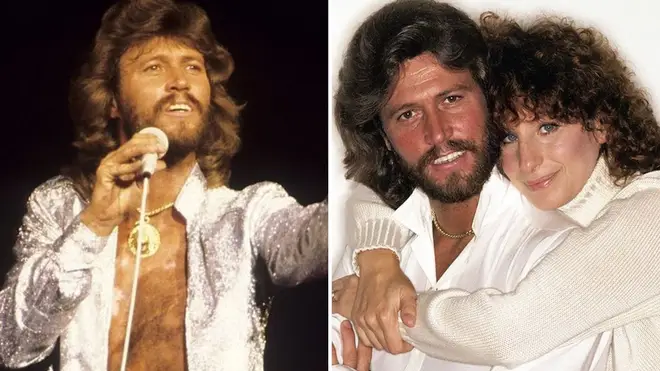In 1980, two titans of music stood at critical junctures in their careers. Barbra Streisand, the reigning queen of Broadway and Hollywood, faced whispers that her sound no longer fit the times. Meanwhile, Barry Gibb of the Bee Gees had just emerged from the ashes of disco backlash, his genius as a songwriter and producer intact. When these two worlds collided, the result was not just a hit record—it was a cultural reset.
The Changing Soundscape
The dawn of the 1980s brought an evolving musical landscape. Disco was fading, rock and punk surged, and younger artists like Michael Jackson were redefining pop. Though Streisand’s name remained golden, her recent albums had not ignited the charts the way they once did. Critics began to label her style outdated, and the pressure mounted for her to prove she could still command the musical conversation.
Enter Barry Gibb
Barry Gibb, reeling from the “Disco Sucks” movement, had lost none of his creative fire. His uncanny ability to write timeless, emotive melodies made him a sought-after collaborator. A conversation between Streisand’s team and Gibb’s circle sparked the idea of working together. What began as a musical experiment evolved into something monumental.
Crafting a New Sound
Gibb wasn’t just a songwriter; he produced the entire album Guilty, bringing in his trusted team Alby Galuten and Karl Richardson. His goal was not to reshape Streisand into a Bee Gees clone, but to create a fresh soundscape that honored her vocal prowess while introducing a modern edge. The result: sweeping melodies, rhythmic sophistication, and lyrical depth.
The first fruit of their labor, “Woman in Love,” became an international sensation, reaching number one in more than a dozen countries. It was Streisand’s first U.S. number one since A Star Is Born and proved she could still resonate with a new generation.
A Creative Partnership
The magic between Gibb and Streisand extended beyond the studio. Their duet on the title track “Guilty” showcased a chemistry that felt effortless and electric. Songs like “What Kind of Fool” and “Run Wild” blended Streisand’s precision with Gibb’s emotional fluency. He encouraged her to relax her phrasing, introducing a new warmth to her delivery.
Behind the scenes, their working dynamic was one of mutual respect. Gibb, in awe of Streisand’s discipline, pushed her to embrace vulnerability. She, in turn, allowed him to guide her into unexplored musical territory. Together, they redefined what a musical partnership could look like.
The Album’s Triumph
Released in September 1980, Guilty soared to the top of the charts. It became Streisand’s best-selling album of all time, moving over 15 million copies worldwide. Three singles—”Woman in Love,” “Guilty,” and “What Kind of Fool”—all cracked the U.S. Top 10. The album cover—the two artists in white, cheek to cheek—became iconic, a visual emblem of their collaboration.
Legacy and Reunion
Guilty was more than a comeback; it was a redefinition. Streisand used its success as a springboard into new sonic territory throughout the 1980s. For Gibb, it solidified his status as a master behind the scenes. Their bond endured, leading to a 2005 reunion album, Guilty Pleasures, which, while modest in sales, recaptured their timeless chemistry.
In a 1981 Grammy moment that has since become legendary, the duo performed “Guilty” live, sealing their collaboration with a standing ovation. Streisand’s public thanks—”You gave me something I didn’t even know I needed”—and Gibb’s embrace said everything.
A Story of Artistic Salvation
Did Barry Gibb save Barbra Streisand’s career? Not exactly. But he did something perhaps more meaningful. He gave her the artistic confidence to evolve. And in return, she gave him a canvas worthy of his vision.
Guilty remains a high watermark in pop history—a reminder that sometimes, the most unexpected collaborations create the most enduring legacies.
